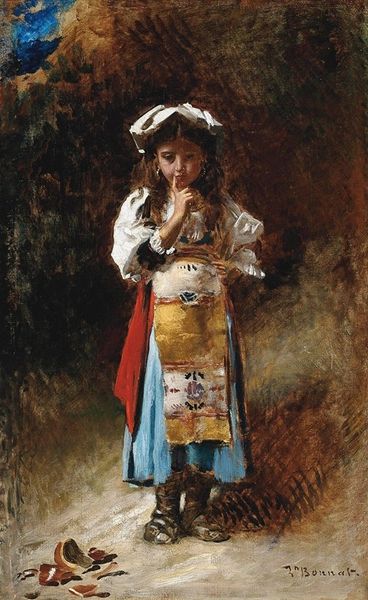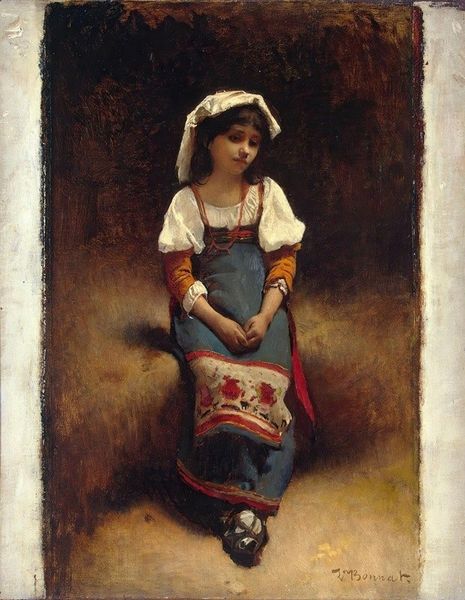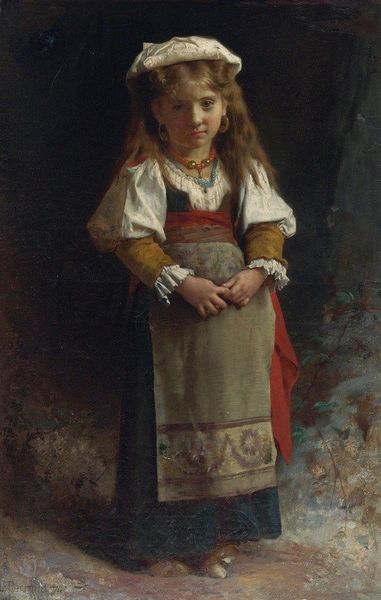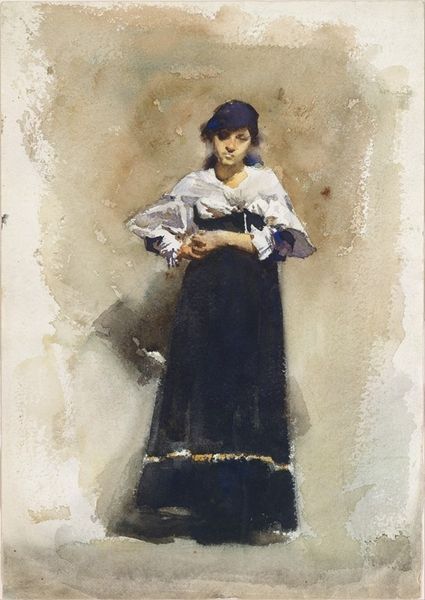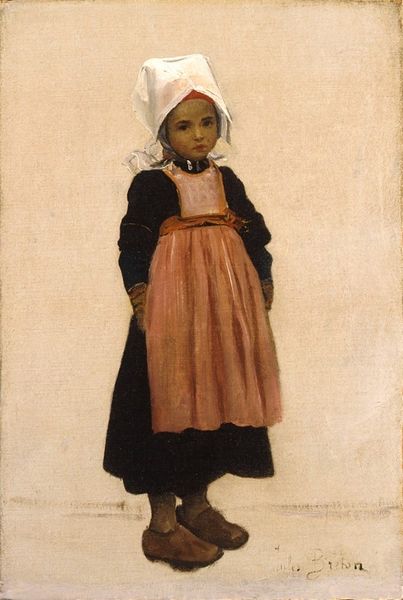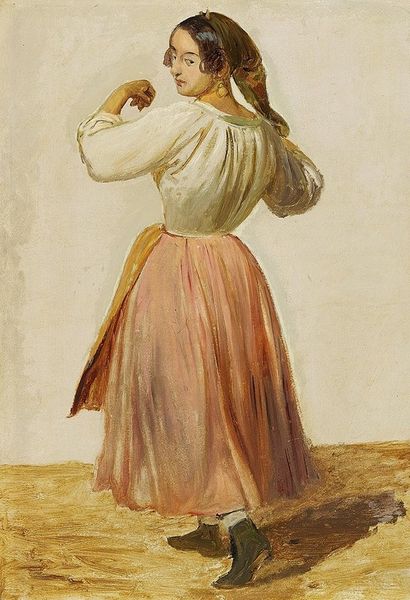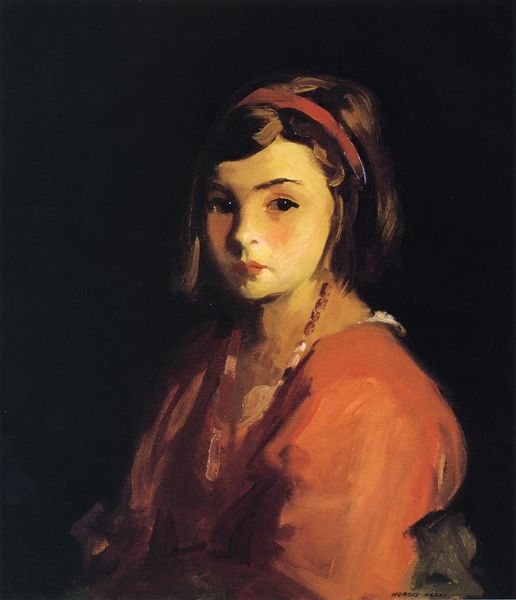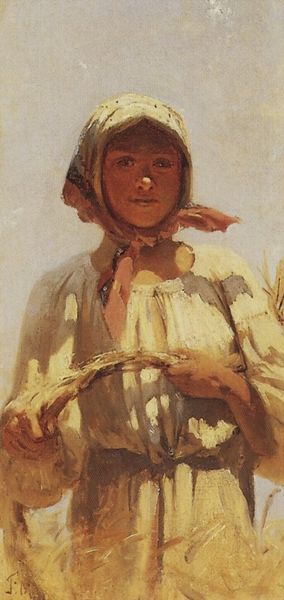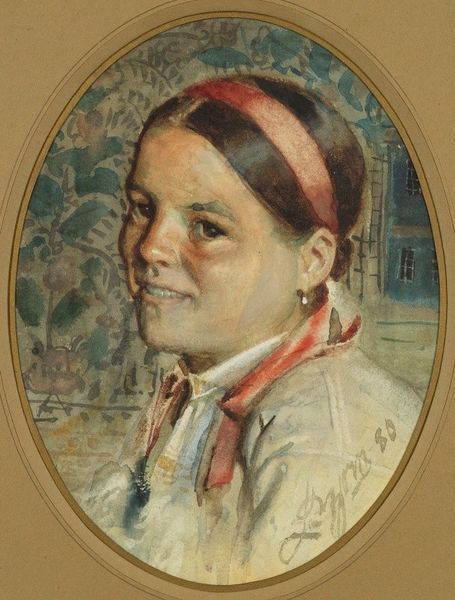
painting, oil-paint
#
portrait
#
painting
#
impressionism
#
oil-paint
#
charcoal drawing
#
figuration
#
oil painting
#
genre-painting
Dimensions: 146.1 x 103.5 cm
Copyright: Public domain
Curator: What a striking pose—there's a tenderness but also a stern command to silence. Editor: Indeed. The work, titled "Meditation", was painted in 1884 by Léon Bonnat. Bonnat was known for his academic style and history painting but also his acute portraits. The canvas presents a young Italian woman holding her index finger to her lips. Curator: The brushwork seems so varied. There are tight, meticulous strokes around her face and then broad, loose passages throughout her garments, contrasting textures that convey the different weights and volumes in her clothing. Editor: She represents an intersection of Bonnat's classicism with an interest in depicting genre subjects, reflecting the popular themes of orientalism and the 'exotic'. One finds it remarkable, in viewing her, how silence and power dynamics interlace through these ethnographic lenses. Curator: The limited palette directs us to the subtleties of light—observe how her face emerges from a tenebrous background; her eyes draw us in while the shadow gives her figure weight in the pictorial space. The color choices make it clear that value—light and dark contrast—plays the dominant role here in establishing the structural composition of the canvas. Editor: This is a composition built on binaries: shadow and light, childhood and implied adult burdens. I see the red sash, combined with her dress and adornments, as indicators of labor. The setting suggests a stark contrast with the relative privilege enjoyed by most gallery patrons in Paris. Her finger implies an awareness of these social lines. The piece seems a rather self-aware study in how class and labor participate within visual representation. Curator: Certainly, such readings offer an intriguing insight. Focusing primarily on Bonnat's formal arrangements allows for deeper appreciation of his virtuosity with the figure and the structural role of his palette. Editor: Exactly—examining her depiction through a formal lens deepens, for me, its ties to these considerations around visibility, labour and its inherent politics.
Comments
No comments
Be the first to comment and join the conversation on the ultimate creative platform.
